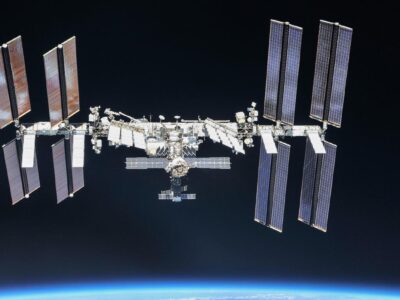NASA Captures Most Detailed Pictures of Earth
These are pictures of the Earth from the most detailed to date. And every 15 minutes, the image is updated nayay a new version. The picture below was taken at 1h07 5/1 days, high resolution pictures 4 times the highest resolution in the past. These images were taken from weather satellites, called GOES-16. This is just geostationary satellite launch of Atmospheric Administration and the US National Satellite (NOAA). Louis Uccellini, director of NOAA Weather Center, said in a press release that: The picture “is not simply a beautiful spectacle, it makes more sense. It is the future of track and weather forecast “.

The most detailed image of Earth ever published. (Photo: NOAA / NASA).
GOES-16 was launched on December 10/19/2016, fly around 35 900 kilometers above the ground, this position is called geostationary orbit. This orbit allows the satellite stationary than a point on the ground and monitoring the fluctuation in the air, ground, and ocean-time – NOAA said. Later this year, GOES-16 will end the test run and will replace GOES-15 (also known as GOES West) or GOES-13 (GOES East), 2 weather satellite was launched in time in 2006 and 2010 respectively. GOES-15 has more than ten years old. GOES-13 is also a small asteroid hitting the January 5/2013, has been idled for a time.
According to NOAA, GOES-16 captured an image with a longer wavelength of light, has a resolution four times, and sent to Earth to five times the frequency of other satellites. That is, we will get a panoramic picture Western Hemisphere is updated every fifteen minutes, track weather phenomena (eg a cyclone) every 30 seconds. Uccellini also said that the more detailed the picture, the faster and newer “will provide a specific look and promptly about the dangerous weather phenomena. It also said the characteristics that the previous tool is often overlooked. Besides, the photos are updated quickly this will allow us to observe and predict the evolution of weather phenomena more accurately. ” “These experts can forecast for the warning and accurate information, timely and reliable. At the same time they can also provide accurate information about emergency situations and other decisions, “Uccellini said.
NOAA plans to launch a similar satellite, GOES-S is known as GOES-17 or, in the spring of 2018 to replace the older satellites others.
Here are a few parts of the panoramic image:

This is North America with rain, snow moving around the country. (Photo: NOAA / NASA).
Data unprocessed image from GOES-16 satellite that looks like this:

Data unprocessed image from GOES-16 satellite. (Photo: NOAA / NASA).
Two-channel satellite captured visible light (be joined to form the images you see in this article), and four-channel infrared shooting (not visible light, but can sense temperature) . Satellites can add another ten infrared channel to be able to filter out “the difference in the air like clouds, water vapor, smoke, stone, volcanic ash,” NOAA said.

GOES-16 to use the moon to edit images. (Photo: NOAA / NASA).

Florida, the Caribbean and parts of Central America. (Photo: NOAA / NASA).

Northern America. (Photo: NOAA / NASA).

Northwest America. (Photo: NOAA / NASA).

Yucatan Peninsula of Central America. (Photo: NOAA / NASA).

Dust from the Sahara (right) blowing in the Atlantic. (Photo: NOAA / NASA).

Photos in South America, especially Argentina. A storm hit the northeast.






